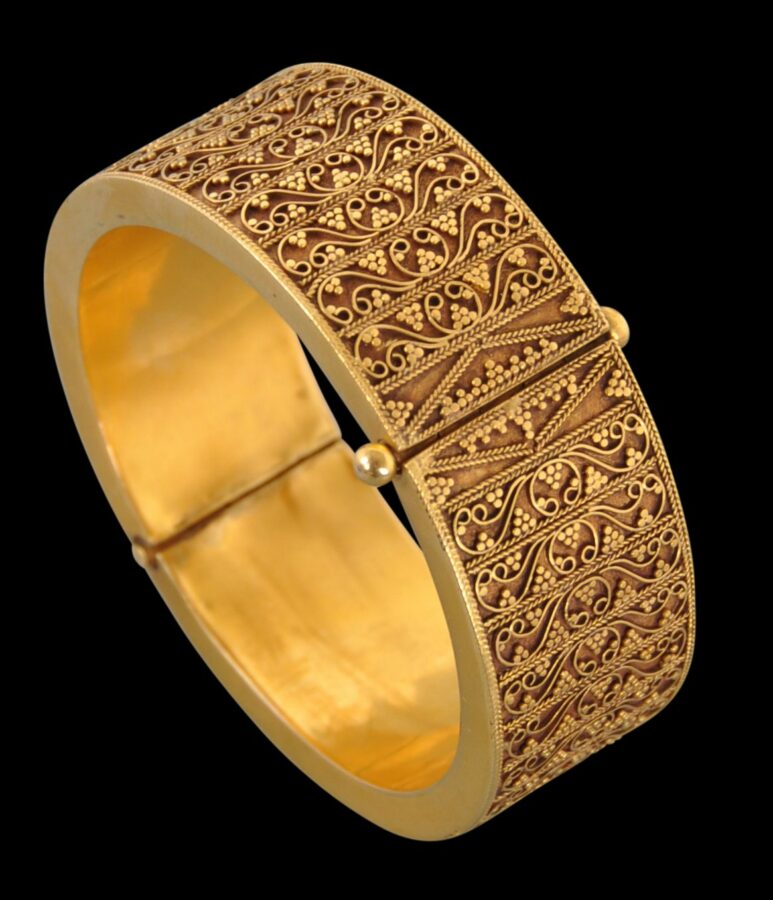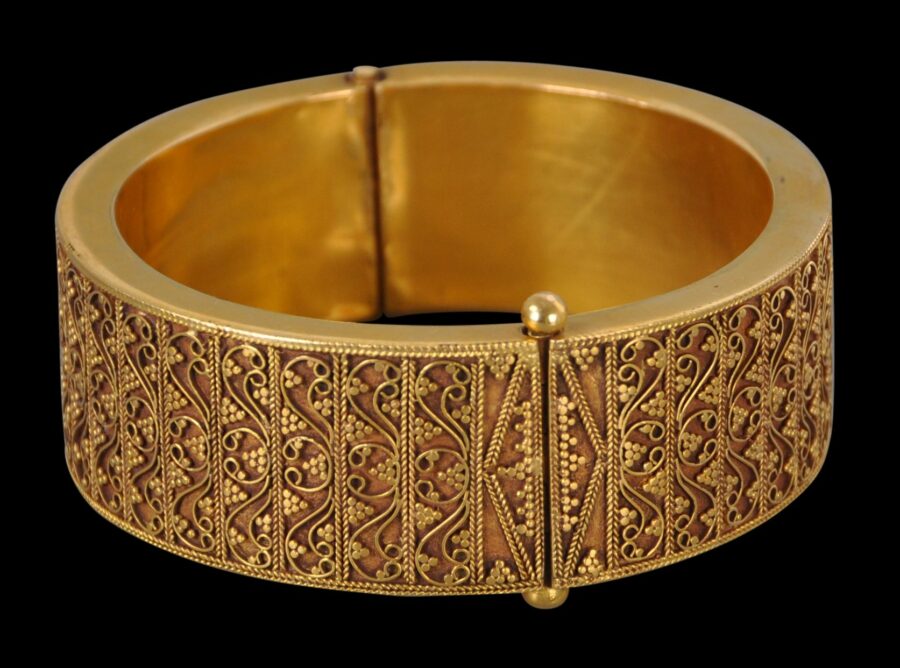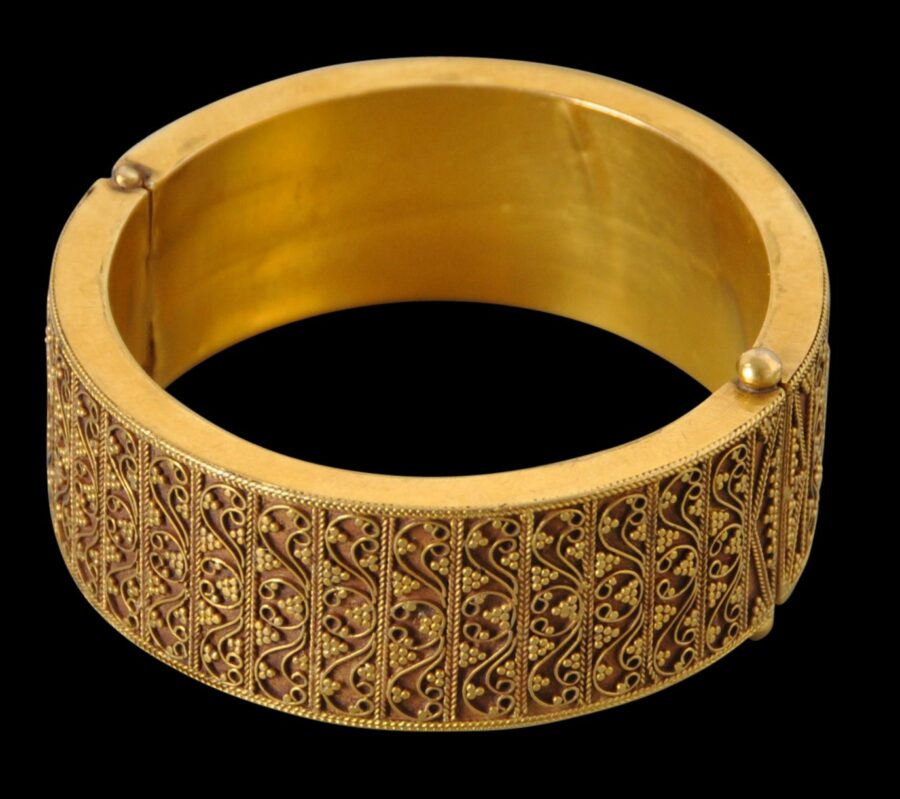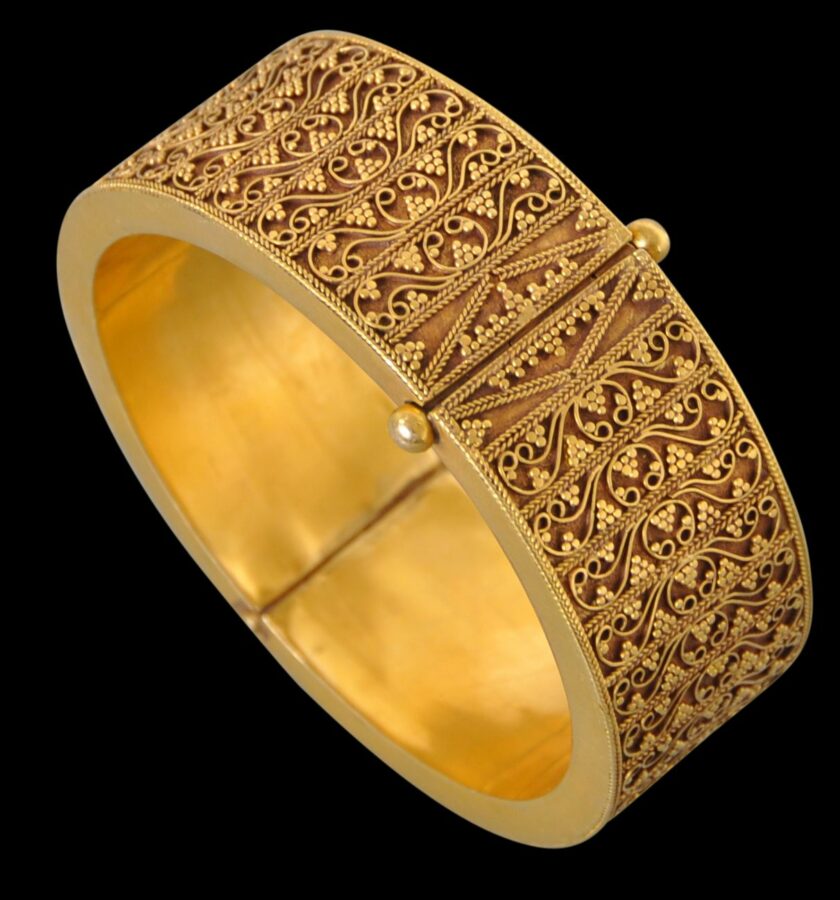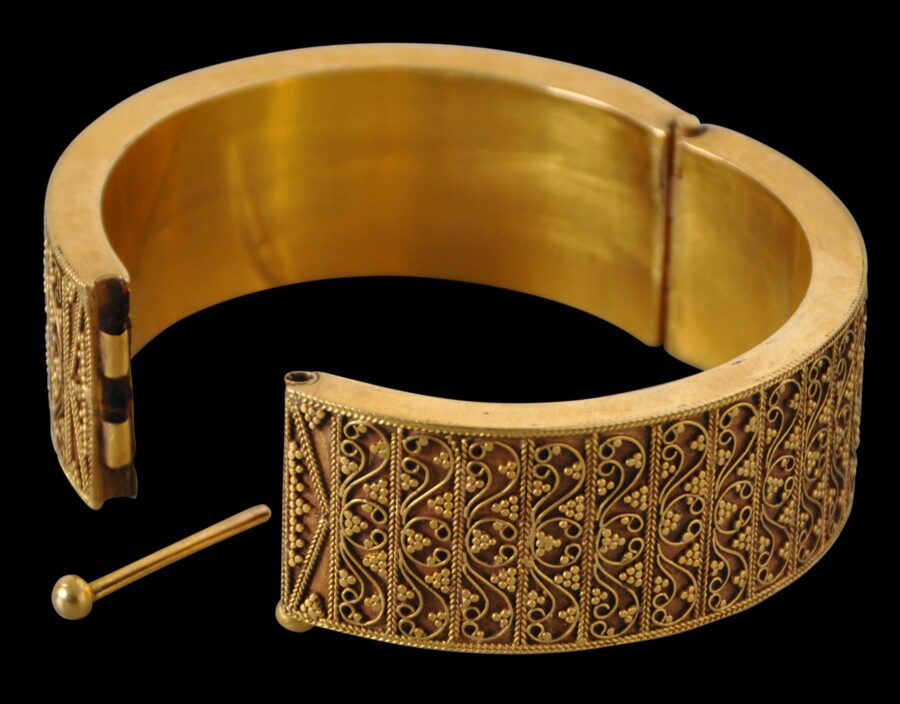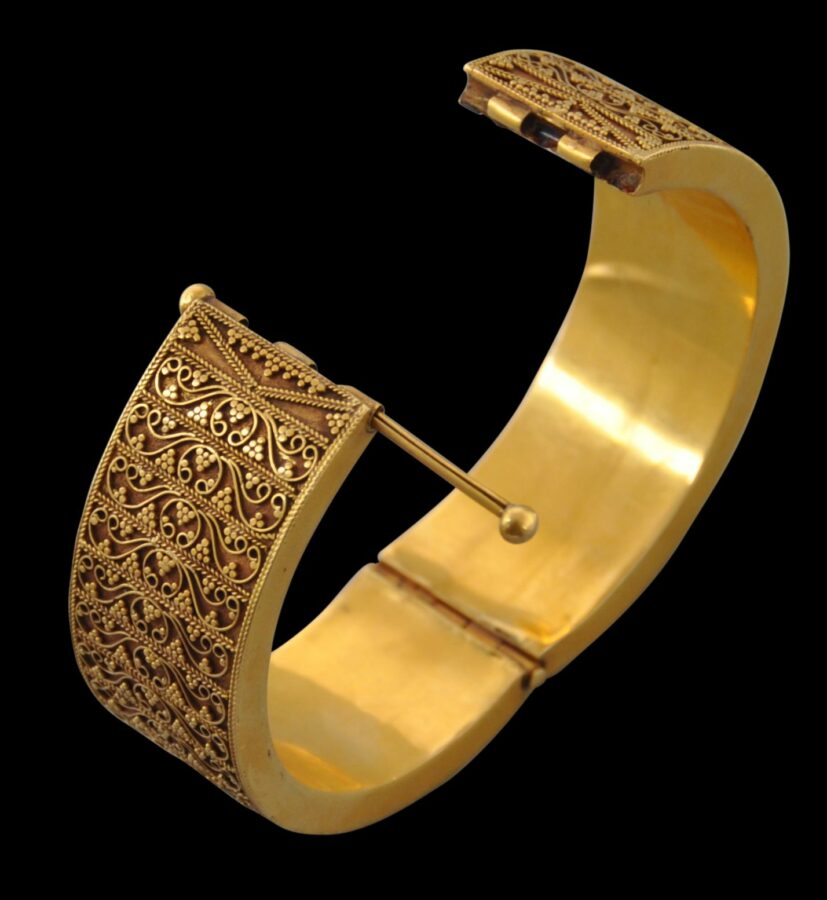This splendid, heavy cuff bracelet of high-carat gold is decorated with applied filigree and flattened granulation work and is in the tradition of the Bugis and Malay gold and silversmiths who operated in South Sulawesi, in Eastern Indonesia.
Gold has not been economised on in this piece – it comprises more than 100 grams of gold (almost 4 ounces) and tests to around 20 carats.
It is of thick gold sheet and is double-walled. It closes with a pin mechanism. The exterior decoration is particularly complex and fine with its array of bands of filigree, twisted gold wirework and granulation work. Among the Malays, the flattened granules are referred to as telur cecak (literally house lizard or cecak egg). There are a few (very) minor losses to the granulation work, as might be expected.
The Bugis are a trading, seafaring Muslim group in southern Sulawesi, a large island in Eastern Indonesia. Bugis emigres also settled in southern Sumatra and the Riau Archipelago. Their goldwork is closely related to the Malays and indeed, there was a community of Malay gold and silversmiths who were based in southern Sulawesi and from whom the Bugis copied many techniques.
The bracelet is wearable in a modern setting and by modern wrists.
References
Backman, M., Malay Silver and Gold: Courtly Splendour from Indonesia, Malaysia, Singapore, Brunei, and Thailand, River Books, forthcoming.
Borel, F., The Splendour of Ethnic Jewelry: From the Colette and Jean-Pierre Ghysels Collection, Thames & Hudson, 1994.
Richter, A., The Jewelry of Southeast Asia, Thames & Hudson, 2000.
Richter, A., & B. Carpenter, Gold Jewellery of the Indonesian Archipelago, Editions Didier Millet, 2012.


